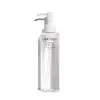What's inside
What's inside
 Key Ingredients
Key Ingredients

 Benefits
Benefits

 Concerns
Concerns

 Ingredients Side-by-side
Ingredients Side-by-side

Water
Skin ConditioningSodium Gluconate
Skin ConditioningMethylpropanediol
SolventButylene Glycol
HumectantMaltooligosyl Glucoside
Skin ConditioningHydrolyzed Vegetable Protein
Skin ConditioningBiosaccharide Gum-2
Skin ConditioningRhizobian Gum
Chondrus Crispus
MaskingAcetyl Hexapeptide-49
Skin ConditioningCitric Acid
BufferingSodium Hyaluronate
HumectantPectin
Emulsion StabilisingArginine
MaskingProline
Skin ConditioningSerine
MaskingGlucose
HumectantCitrus Paradisi Peel Oil
MaskingMentha Viridis Leaf Oil
AstringentHydrogenated Starch Hydrolysate
HumectantXanthan Gum
Emulsifying3-Hexenol
MaskingCaprylyl Glycol
EmollientPhenoxyethanol
PreservativeEthylhexylglycerin
Skin ConditioningChlorphenesin
AntimicrobialLimonene
PerfumingWater, Sodium Gluconate, Methylpropanediol, Butylene Glycol, Maltooligosyl Glucoside, Hydrolyzed Vegetable Protein, Biosaccharide Gum-2, Rhizobian Gum, Chondrus Crispus, Acetyl Hexapeptide-49, Citric Acid, Sodium Hyaluronate, Pectin, Arginine, Proline, Serine, Glucose, Citrus Paradisi Peel Oil, Mentha Viridis Leaf Oil, Hydrogenated Starch Hydrolysate, Xanthan Gum, 3-Hexenol, Caprylyl Glycol, Phenoxyethanol, Ethylhexylglycerin, Chlorphenesin, Limonene
Water
Skin ConditioningButylene Glycol
HumectantDipropylene Glycol
HumectantPEG/PPG-50/40 Dimethyl Ether
Skin ConditioningPPG-13-Decyltetradeceth-24
EmulsifyingPhenoxyethanol
PreservativeMethylparaben
PreservativeTetrahydroxypropyl Ethylenediamine
Betaine
HumectantCitric Acid
BufferingSodium Citrate
BufferingParfum
MaskingDimorpholinopyridazinone
UV AbsorberSodium Metaphosphate
BufferingCitronellol
PerfumingLinalool
PerfumingLimonene
PerfumingPaeonia Albiflora Root Extract
Skin ConditioningTocopherol
AntioxidantHamamelis Virginiana Leaf Extract
Skin ConditioningRosmarinus Officinalis Leaf Extract
AntimicrobialBenzoic Acid
MaskingWater, Butylene Glycol, Dipropylene Glycol, PEG/PPG-50/40 Dimethyl Ether, PPG-13-Decyltetradeceth-24, Phenoxyethanol, Methylparaben, Tetrahydroxypropyl Ethylenediamine, Betaine, Citric Acid, Sodium Citrate, Parfum, Dimorpholinopyridazinone, Sodium Metaphosphate, Citronellol, Linalool, Limonene, Paeonia Albiflora Root Extract, Tocopherol, Hamamelis Virginiana Leaf Extract, Rosmarinus Officinalis Leaf Extract, Benzoic Acid
Ingredients Explained
These ingredients are found in both products.
Ingredients higher up in an ingredient list are typically present in a larger amount.
Butylene Glycol (or BG) is used within cosmetic products for a few different reasons:
Overall, Butylene Glycol is a safe and well-rounded ingredient that works well with other ingredients.
Though this ingredient works well with most skin types, some people with sensitive skin may experience a reaction such as allergic rashes, closed comedones, or itchiness.
Learn more about Butylene GlycolCitric Acid is an alpha hydroxy acid (AHA) naturally found in citrus fruits like oranges, lemons, and limes.
Like other AHAs, citric acid can exfoliate skin by breaking down the bonds that hold dead skin cells together. This helps reveal smoother and brighter skin underneath.
However, this exfoliating effect only happens at high concentrations (20%) which can be hard to find in cosmetic products.
Due to this, citric acid is usually included in small amounts as a pH adjuster. This helps keep products slightly more acidic and compatible with skin's natural pH.
In skincare formulas, citric acid can:
While it can provide some skin benefits, research shows lactic acid and glycolic acid are generally more effective and less irritating exfoliants.
Most citric acid used in skincare today is made by fermenting sugars (usually from molasses). This synthetic version is identical to the natural citrus form but easier to stabilize and use in formulations.
Read more about some other popular AHA's here:
Learn more about Citric AcidLimonene is a fragrance that adds scent and taste to a formulation.
It's found in the peel oil of citrus fruits and other plants such as lavender and eucalyptus. The scent of limonene is generally described as "sweet citrus".
Limonene acts as an antioxidant, meaning it helps neutralize free radicals.
When exposed to air, oxidized limonene may sensitize the skin. Because of this, limonene is often avoided by people with sensitive skin.
The term 'fragrance' is not regulated in many countries. In many cases, it is up to the brand to define this term. For instance, many brands choose to label themselves as "fragrance-free" because they are not using synthetic fragrances. However, their products may still contain ingredients such as essential oils that are considered a fragrance.
Learn more about LimonenePhenoxyethanol is a preservative that has germicide, antimicrobial, and aromatic properties. Studies show that phenoxyethanol can prevent microbial growth. By itself, it has a scent that is similar to that of a rose.
It's often used in formulations along with Caprylyl Glycol to preserve the shelf life of products.
Water. It's the most common cosmetic ingredient of all. You'll usually see it at the top of ingredient lists, meaning that it makes up the largest part of the product.
So why is it so popular? Water most often acts as a solvent - this means that it helps dissolve other ingredients into the formulation.
You'll also recognize water as that liquid we all need to stay alive. If you see this, drink a glass of water. Stay hydrated!
Learn more about Water